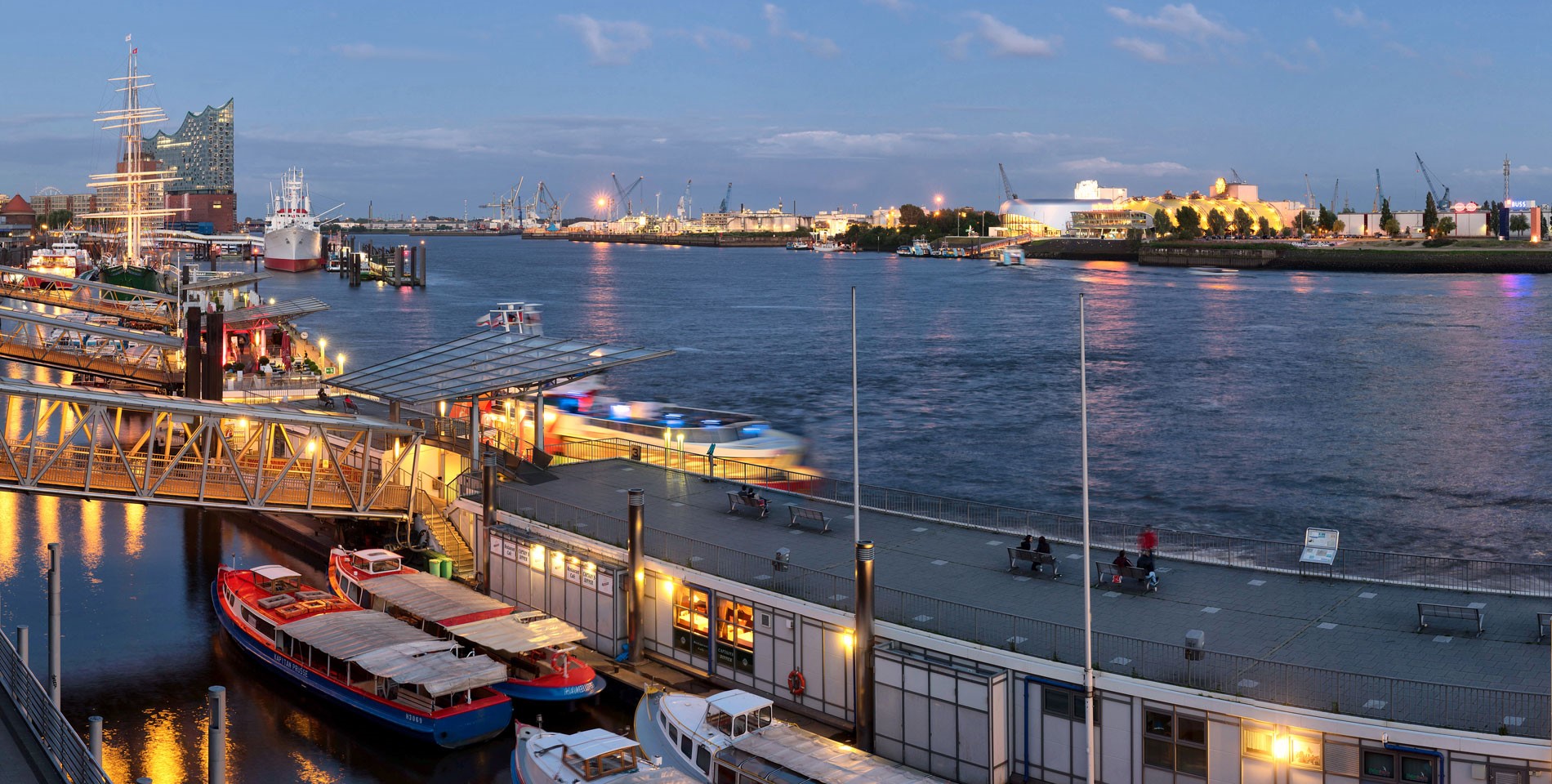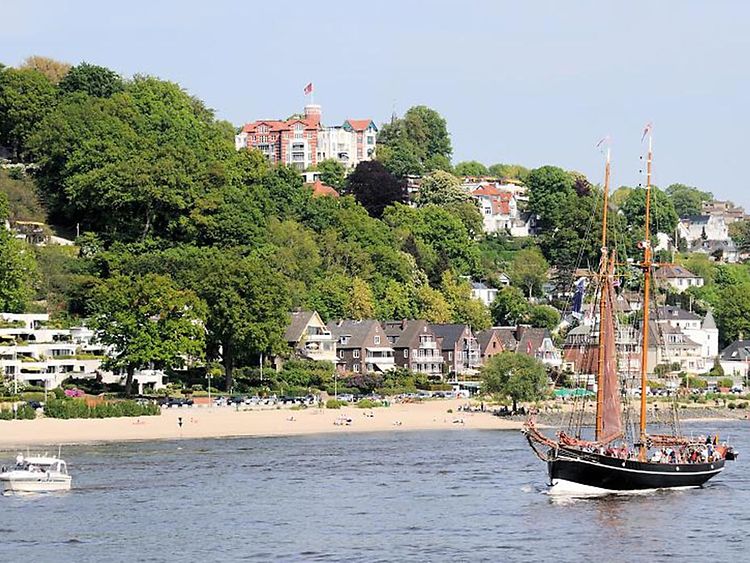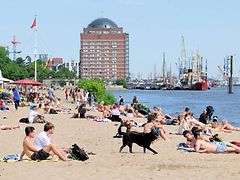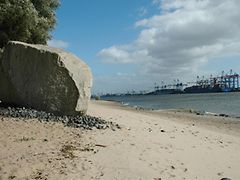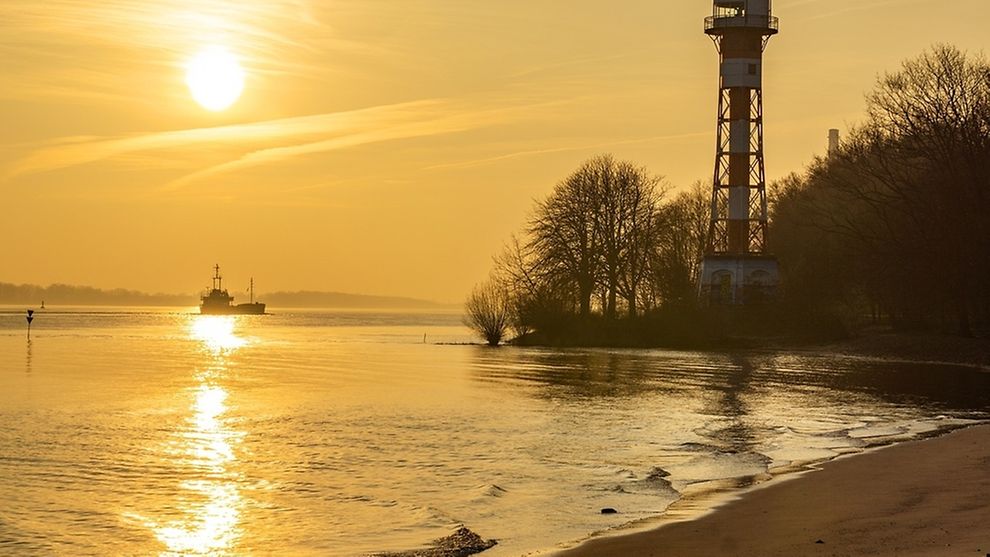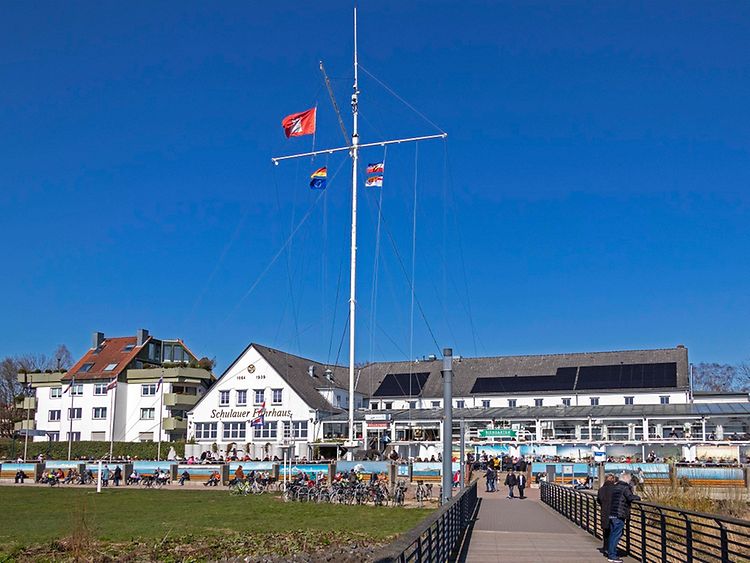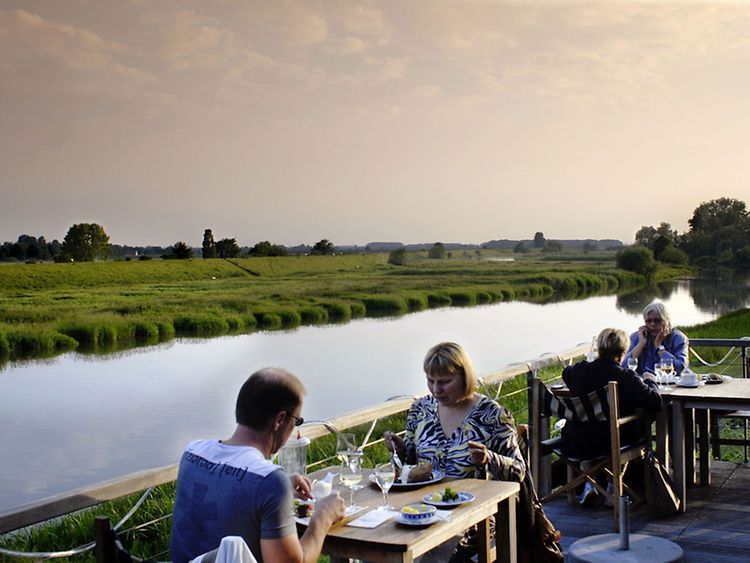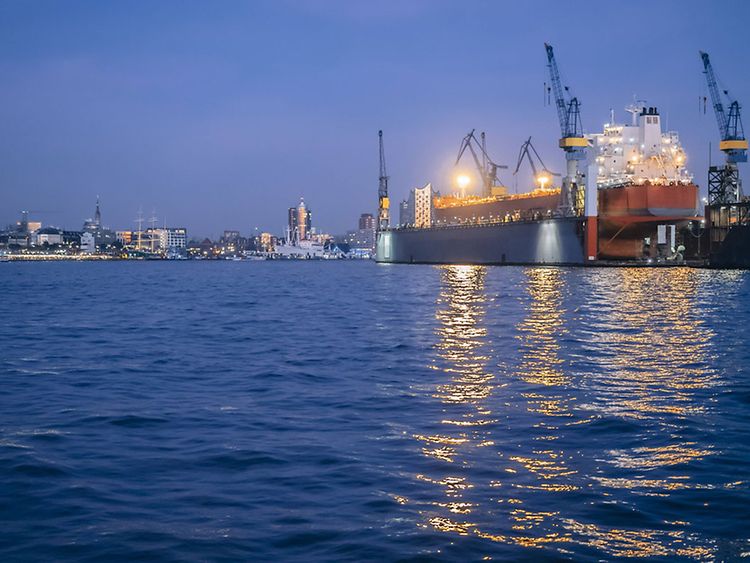One of Hamburg’s many attractive features is its close proximity to both the Baltic and North Sea. But anyone looking for a fresh breeze and sand between their toes need not travel even that far: the River Elbe has some first-class sand beaches that are easily accessible from the city centre by local public transport. Do some sports, relax on the beach and go for a walk – with or without your four-legged companion – all the way to the most beautiful natural beach in Hamburg.
Hamburg's City Beach
The Elbstrand beaches span 13 kilometres of the Elbe and offer spectacular views of the Port of Hamburg. The best thing is – especially for an international city like Hamburg – that the beach is right at your doorstep and easily accessible by public transport or bike. Hop on the bus or one of the harbour ferry boats, or take in the Elbwanderweg hiking trail on foot or by bike.
In 2017, the New York Times even picked the Elbstrand as one of their ten favourite spots by the water in all of Europe, noting the beauty of the scenery and the Port’s industrial backdrop. A particular highlight is the famous Strandperle – the mother of all beach clubs. Just plop yourself down in the sand and watch the giant container ships go by!
Important note: The River Elbe is a commercial waterway and therefore not suitable for swimming and bathing. The drifts and currents are dangerous and intensified even more by shipping traffic. We highly recommend sticking to sunbathing on land.
Harbour Museum and the Old Swede
The first section of the beach is just to the west of the picturesque Museum Port Oevelgönne and easily reachable by bus (line 113) or ferry boat (line 62). Every spring, this central city beach turns into a hotspot for sun worshippers, families, hikers and athletes. Grilling and picnicing are also allowed in many places, but please remember to take your rubbish with you. In winter, the beaches make for lovely walks and the bars and restaurants along the way promise cosy warmth and hot mulled wine.
The promenade after the Oevelgönne Elbstrand beach is called Hans-Leip-Ufer with its prominent Alter Schwede (lit.: ‘Old Swede’) rock on the beach. This 217-tonne boulder was carried from what is now Sweden all the way to Hamburg by glaciers during one of the last ice ages; it has a circumference of about 20 metres and is an official citizen of the City of Hamburg. A perfect landmark beside which to roll out your towel!
Hans-Leip-Ufer reaches all the way down to the Teufelsbrück ferry dock (line 64 from Finkenwerder). Its sand beaches are a little more remote, more natural and much less crowded on hot days than the ones closer to the city. The bus line 112 runs along the Elbchaussee street, from where it is only a short, albeit steep, descent to the Elbe banks.
Dog Beach and Quaint Beach Hideouts
Farther downstream where the Elbe opens up, the former fishing village of Blankenese is now one of the most well-off neighbourhoods in all of Hamburg. At the foot of the Treppenviertel, it features its own suburban beach with a maritime flair, complete with a picture-perfect lighthouse and the two shipwrecks: MS Uwe and Polstjernan. Take the S1 to Blankenese and change to the bus line 488 to get down to the river.
A short walk along the banks offers access to the beautiful and quiet Falkensteiner Ufer beach between the Blankenese and Rissen neighbourhoods. Dog owners may let their furry friends run free and without leashes here – if they are friendly and well-trained, of course. In the summer, a lovely and well-maintained campsite welcomes visitors young and old.
A favourite among locals is the Wittenbergener Strand in the Rissen neighbourhood: it is the last remaining all-natural beach in Hamburg and offers stunning views of the Rissen lighthouse and Neßsand nature reserve on the opposite river island. By the way, the Elbe riverbanks are directly impacted by the North Sea tide: with the ebb and flow of the sea and river, the beaches become significantly wider or narrower.
